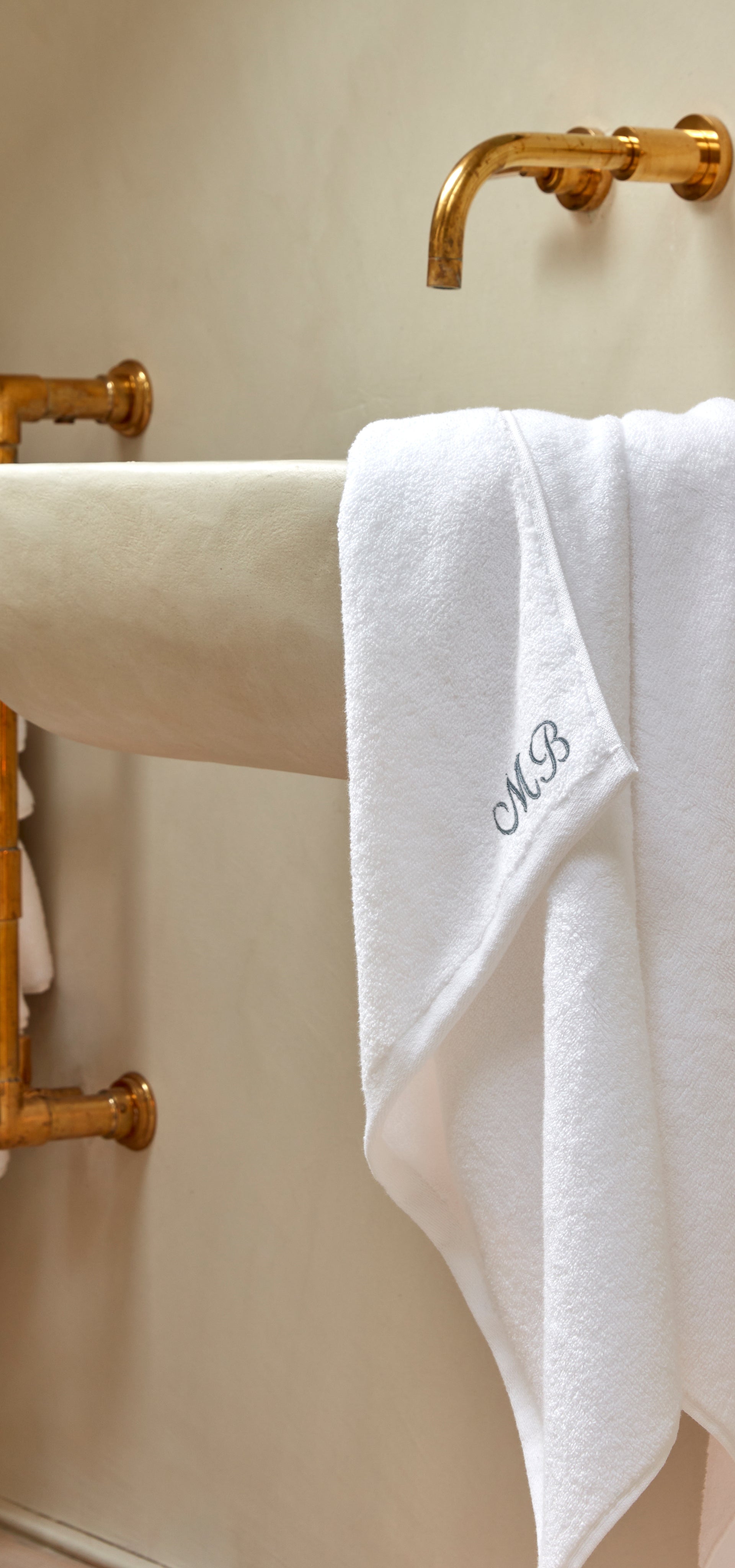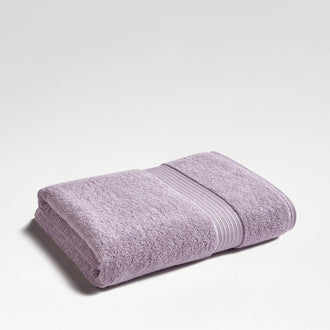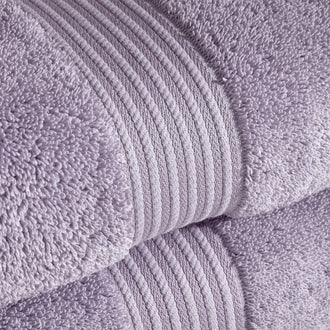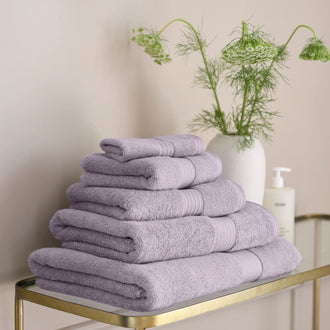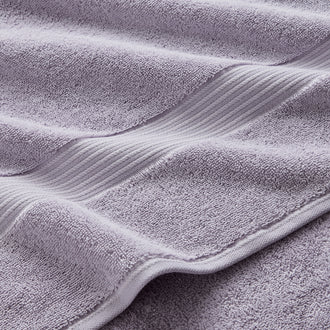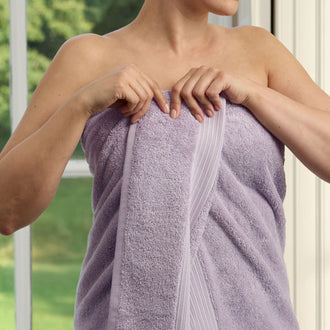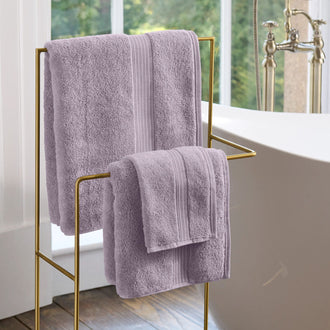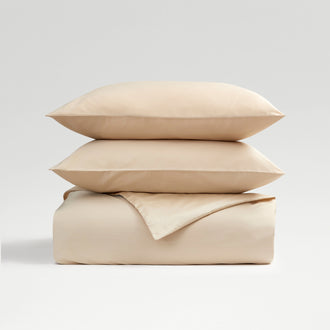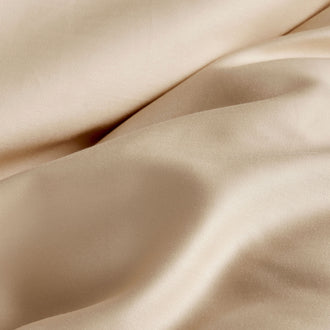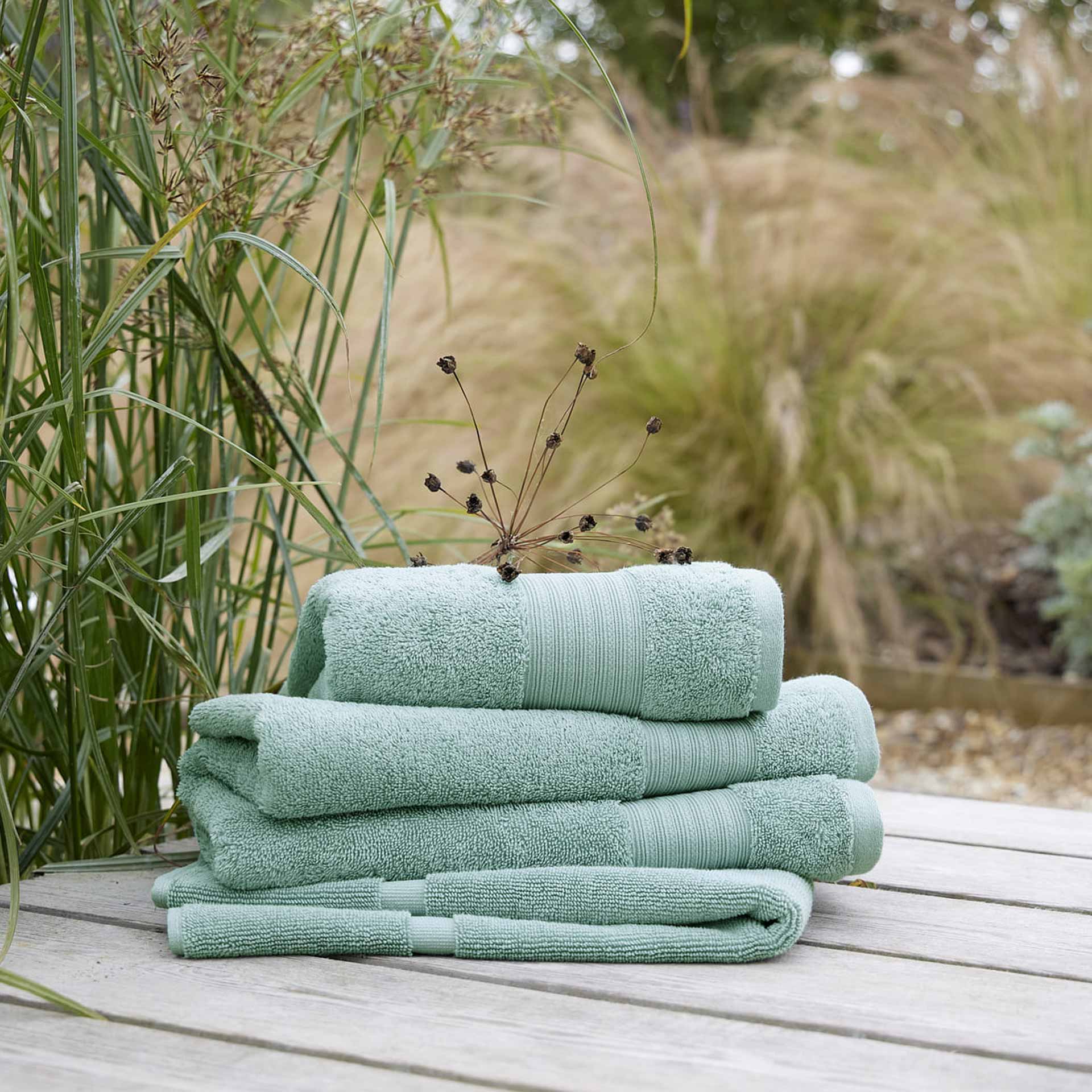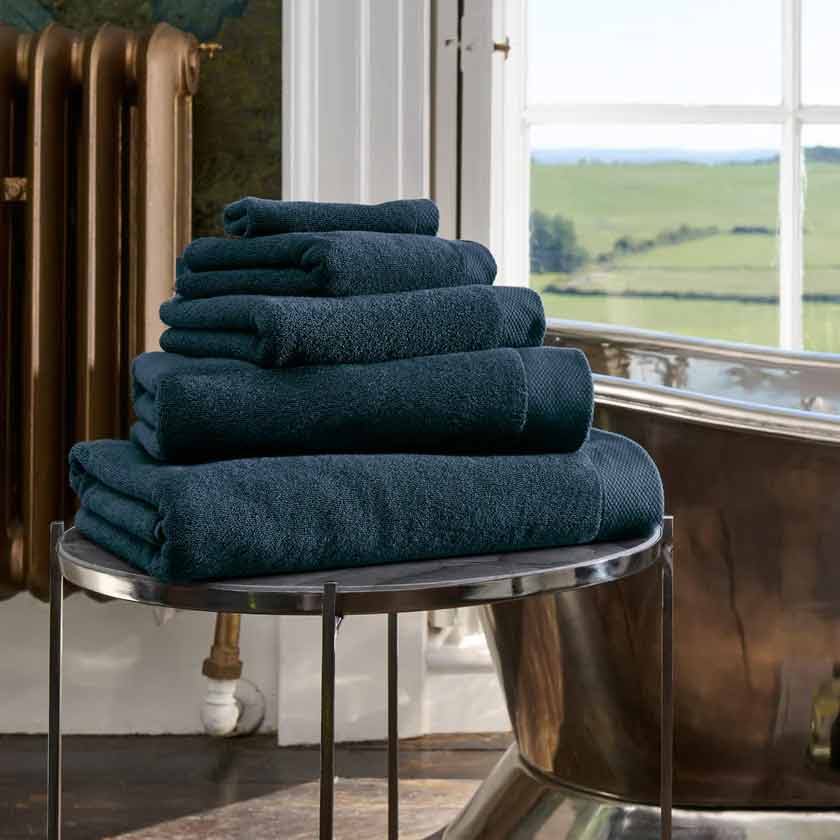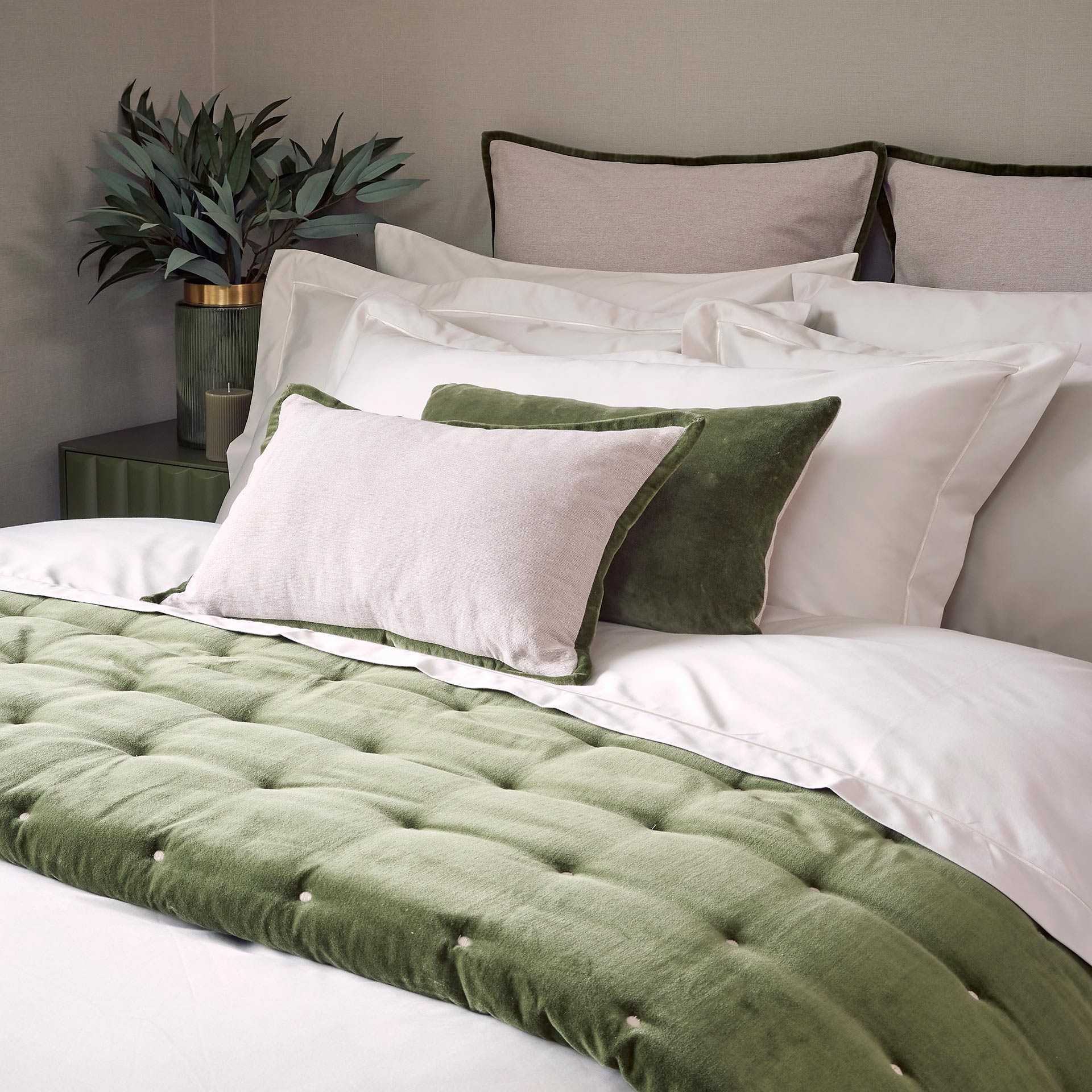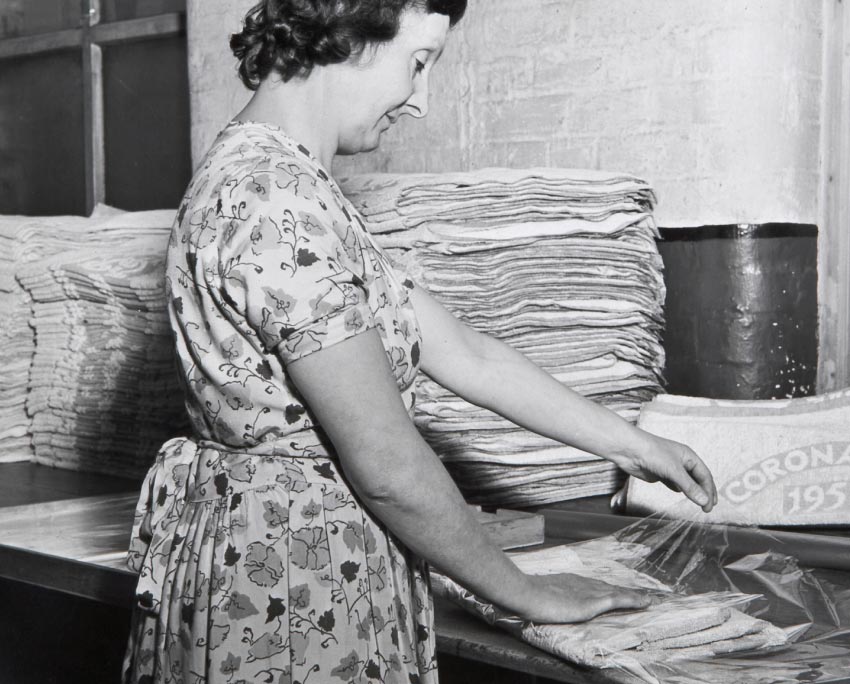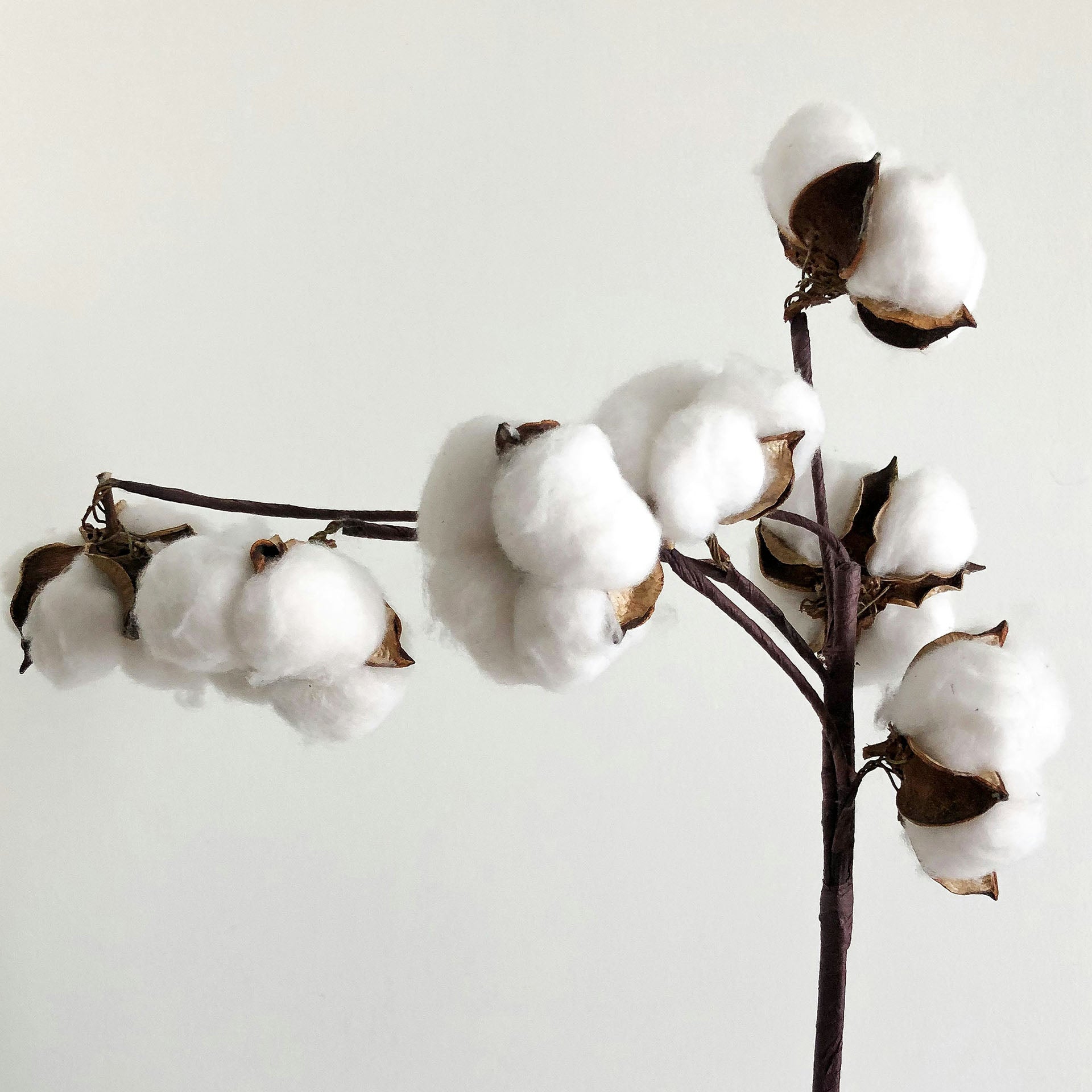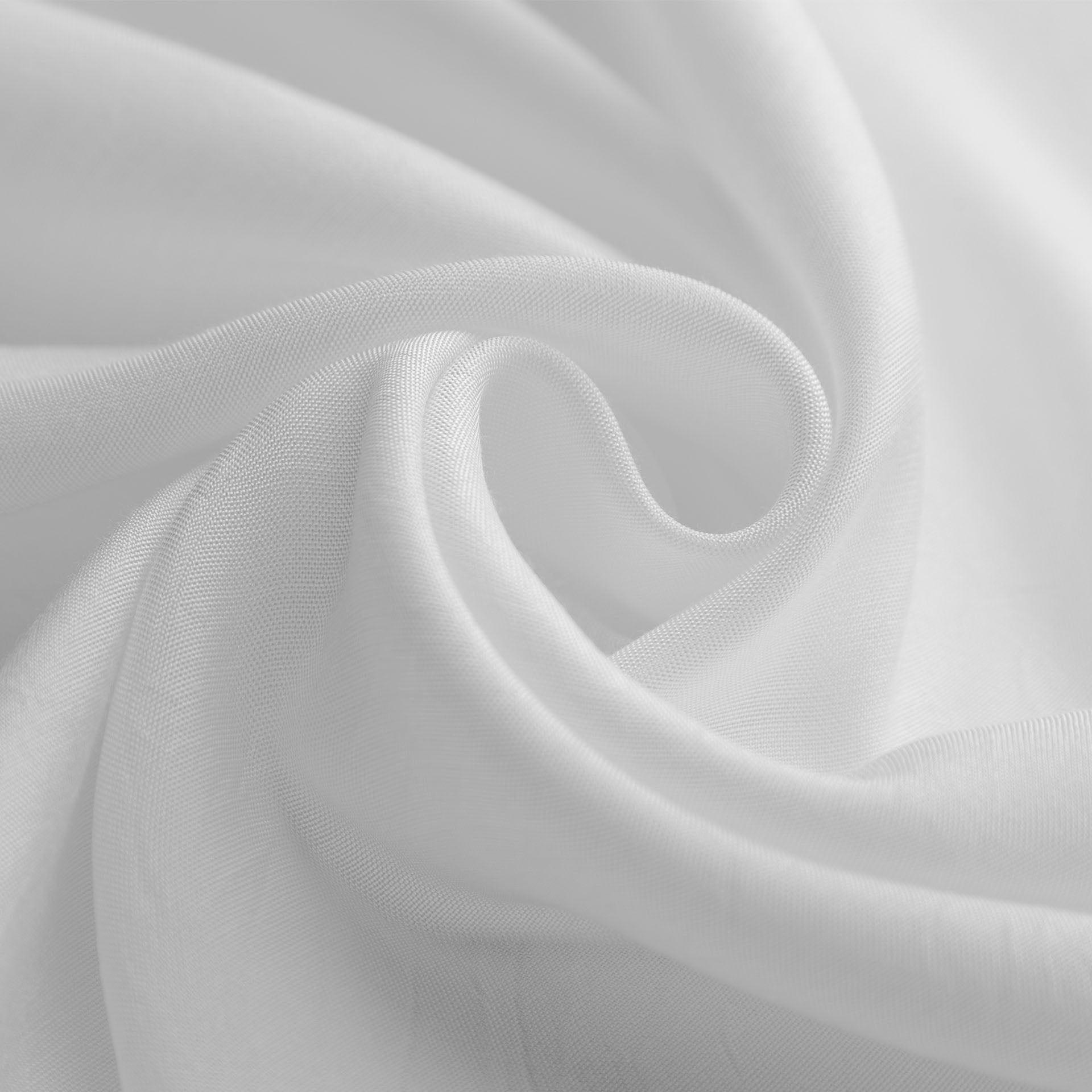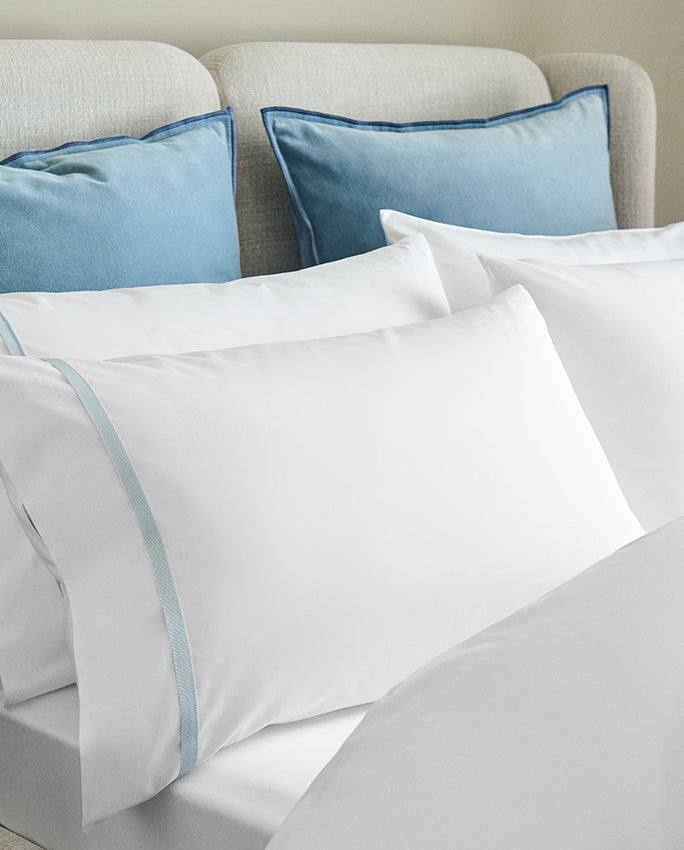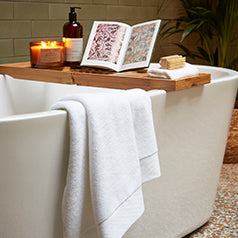lifestyle
How to Get Towels White Again: Simple Tips to Try at Home
When you invest in new towels, you want to keep them at their best. But retaining the pristine aesthetic of white towels can be hard. Over time, they can easily start to look dull, attract stains and generally lose that plush, new feeling.
With 175 years of crafting towels and bed linen, we have plenty of practical tips on how to get towels white again. Since we became a household name in the 1800s, we've been known for white bath towels, and with this long history comes a great deal of knowledge. To understand what’s behind discolouration, we need to first go back, right back to where we started in 1850, and what this means for your towels today.
The Invention of the Towel: Our Historic Beginnings
It's hard to imagine these days, but before the modern towel existed, people had to use linens or other garments to dry themselves. This all changed when Henry Christy took a trip to Istanbul and discovered a looped, fluffy fabric. He returned home to his family's weaving and doubling business and set to work (with his brother Richard and a talented weaver called Samuel Holt) to invent a special loom that could recreate this fabric fast enough to meet high demand.
This fabric loop is also known as terrycloth. Incredibly soft, this weaving technique soaks up a great deal of water. Never seen outside of Turkey before then, this innovative fabric (and the industrial loom Christy created to manufacture it) changed bathing routines forever.
The very first towel we made was white, and from the start, our focus on quality has stayed strong. But this fabric requires gentle care to maintain softness, so we need to use the right laundry techniques to preserve the fluffy loops and keep whites bright.
Why White Towels Became the Signature Choice
White has long been a classic for home linens. This stylistic choice goes back to the ideas of hygiene and luxury. White feels clean, and any dirt or marks show up right away. This is great for peace of mind, especially if you're staying in a hotel, for example, because you can feel sure that your linens are sanitary (which is exactly why hotels and spas nearly always choose white bath towels).
At the end of the day, a stack of fluffy white towels in the bathroom or linen closet feels calming, clean and luxurious. They also never go out of fashion or show signs of colour fade. Yet, white towels need some TLC to retain their brightness and avoid staining. Let's get into how whites discolour, and what to do to avoid it.
Understanding What Makes White Towels Lose Their Brightness
Over time, white linens can become grey or yellow. This gradual greying is normal, but it doesn't mean your towels can't be brought back to a whiter shade. First, it's about understanding what's happening to the fibres. Essentially, when too many things stick to the cotton (think, stuff like body oils and leftover detergent in the fluffy loops), they can make white towels look dull and or even slightly dirty.
Common Causes of Discolouration
Discolouration can also come not from 'dirt', but from your water and the way you do the laundry. At the end of the day, a lot of little things can add up over time to give that yellowy or greyish tinge. Here are some of the most common causes of towel discolouration:
-
Body oils and sweat: Natural oils and sweat from your skin can get into the towel fibres, and if you don't wash them out straight away, they may cause your towels to turn yellow over time.
-
Hard water minerals: if you're in a hard water area, minerals like calcium and magnesium can build up in your towels, creating a stiff and grey appearance.
-
Detergent residue: Although it's tempting to get towels 'extra clean' by adding too much detergent, it can leave a soapy layer on your towels. This makes them feel scratchier and reduces absorbency, which simultaneously draws in more dirt.
-
Stains: Things like makeup, lotions and skincare can easily leave stains on your towels, which are hard to remove, and diminish that bright and clean look.
-
Overloading the washing machine: It's simple, towels need space to move around in the water to wash away all dirt and oils. So make sure they have room to 'breathe' in your machine.
-
Using chlorine bleach: True, bleach can make towels white, but it's a harsh chemical that weakens the integrity of cotton fabrics. Ultimately, it is always best to avoid.
Proven Techniques to Keep White Towels Fluffy and Bright
Now we know what to avoid, how do we focus on keeping your white towels looking bright and feeling soft? A few easy steps hold the key. It all starts with a good washing routine that removes leftover soap and brings back brightness after each cycle.
First, schedule a specific towel wash, separate from clothes. This helps avoid lint from other items, snagging the terry loops on things like zips, and stops colours from spreading.
Rather than using harsh chemicals, here are some natural, tried and tested solutions that won’t damage soft cotton. Remember, these are not needed for every wash, just every few cycles, and you can find out more in our guide on washing towels.
-
Baking soda: Add about a half-cup of baking soda to your washing machine along with your detergent. This mix works like a natural deodoriser and freshens the fibres while lifting stains and boosting softness.
-
Distilled white vinegar: Pour one cup of white vinegar into the fabric softener tray or add it during the last rinse cycle. This works by breaking down the mineral buildup from hard water and any soap left behind for a softer, more absorbent finish.
-
Sunlight: Yes, hanging your towels in the sun to dry can help brighten the fabric, thanks to the power of UV rays. If you like a super soft finish, you can put them in the tumble dryer when almost dry, to fluff up the fibres.
Expert Solutions for Stains, Odours, and Restoration
If your towels need a little extra to remove mustiness or discolouration, you can use similar steps, but as a soak, to boost the effects. This is especially useful for harder-to-remove stains, working to lift stubborn marks before you put them in the washing machine. Here's how:
-
Baking soda paste: Mix baking soda with a bit of water until it's slightly thick, then add it directly to the stained areas. Leave it for about 15 to 20 minutes, then wash it off in your machine.
-
White Vinegar Soak: If you want the whole towel to look brighter, mix one part white vinegar with four parts cold water and soak the towels in this mix in your bathtub for an hour, then wash as usual.
Ultimately, keeping your white towels bright and soft comes down to a few little tweaks in your laundry routine. We know, this is more than comfort; it's about getting the most from your towels and creating a luxury feel that lasts.
If you need extra care tips or answers for a specific problem, we’re here to help. Simply get in touch with our team now.
Frequently Asked Questions
How often should I wash my white towels to keep them bright?
To keep your white towels bright and clean, wash them after every three or four uses. Regular cleaning helps stop body oils and dirt from building up on the fibres, which makes them turn yellow over time. And remember to give your towels room to move in the washing machine for a thorough clean.
Can I make my white towels fluffy without using fabric softener?
We recommend avoiding fabric softener, as it can reduce a towel's absorbency. Instead, for extra plushness, try using wool dryer balls. These act as a 'fluffer' in the drying cycle by getting between the towels, increasing the lift of the fibres and speeding up drying time. Just give your towels a shake before popping in to help separate the fibres first.
Is hot or cold water better for washing white towels?
For white towels, it is best to wash them in warm water (rather than a harsh, hot temperature) as this helps to kill germs. It also helps break down body oils, dirt, and any leftover detergent to keep your towels bright.
How to get towels white again when stained?
To get your white towels white again, try soaking them in a mixture of warm water, baking soda, and vinegar for a few hours. Wash them with bleach-free detergent on a warm cycle, ensuring thorough rinsing. This method effectively removes stains and restores their brightness without damaging the fabric.
